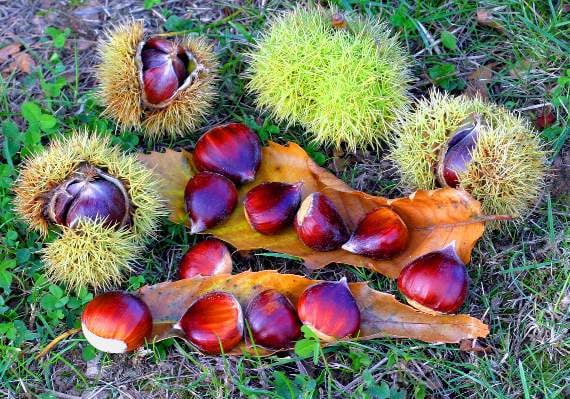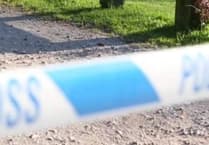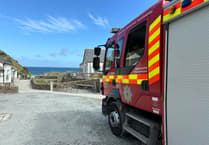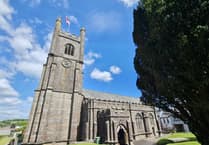Sweet chestnuts are falling from their trees now and if you are lucky enough to have a tree in your garden or know of one just over the road, now is the time to collect the nuts. Getting them out of their very prickly husk is sometimes a bit of a problem. Unfortunately, they must be eaten within a week or so as they will soon go bad. Once again, as with walnuts, our weather is a bit on the damp side for perfect nuts.
The occupying Roman legions had a staple ration of flour made from ground up chestnuts some 2,000 years ago and were probably responsible for introducing the trees to Britain from Italy. It has been our custom to roast the nuts over a fire but we always seem to end up with blackened fingers.
I got a brief glimpse of an autumn and winter visitor sitting among the bramble bushes on the hedge. It was a fieldfare which is a member of the Thrush family and has a strong beak to feed on berries and earthworms. They frequent farm land and gardens where they will consume windfall apples. This is a very social bird and can be seen flying in flocks and sometimes with visiting redwings, which are another member of the thrush family.
Looking around some sheltered places of the hedges whilst walking, I have come across several short-stemmed foxgloves with a few bells left on their tops. These lovely flowers have nothing to do with foxes and their gloves as the name is a corruption of the words ‘folks glauve’ which was a small bell that would just fit into the hand of a fairy. I’ve seen hundreds of foxgloves this year but, alas, no fairies.
I came across a field of tall yellow flowers which I first thought was charlock, but after a closer look I could see that the flowers were those of the mustard plants which are members of the Brassica family. A few days later I walked past the field again and could see that it had been ploughed and the ground worked down. The farmer had used the plants as green manure, which is grown and deliberately returned back to the soil.
Once again, I received a pleasant surprise when I looked outside our front door last week, for there clinging to the wall was a small tortoiseshell butterfly. This is one of a few winter hibernating butterflies and is probably the one you might find in your garden shed or outhouse. In fact, they have been known to wake up a fly around whilst there is snow on the ground.
I think, at last, I have identified that four petalled, white flower that I saw in abundance in a couple of harvested corn fields. I am sure that they are wild radish – Raphanus raphanistrum – as they have their seed pods now which contain up to eight seeds. The pods are so-called ‘waisted’ and jointed, in other words the pod is constricted around the seeds. In the south the flowers are white but, travelling north they are lilac and in the top of Scotland they are bright yellow. Garden radish is a relative and if you have some in your plot let a few of them go to seed so their white flowers and distinctive seed pods can be seen.




